December 2016
December 17, 2016
Falsified Soviet Maps


Original article here.
Additional essay here.
More wide-ranging essay on Soviet maps here.
Posted By: Paul - Sat Dec 17, 2016 -
Comments (0)
Category: Confusion, Misunderstanding, and Incomprehension, Frauds, Cons and Scams, Imitations, Forgeries, Rip-offs and Faux, Military, 1980s, Russia
December 16, 2016
Human Air Raid Siren
January 1951: The Colorado Civil Defense Department received a letter from a woman volunteering to become the state's "first air raid siren."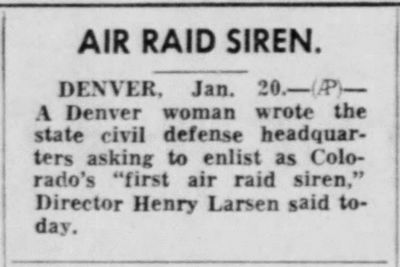
Terre Haute Tribune - Jan 21, 1951
Perhaps they should have used her. When non-human sirens were installed the following year they reportedly didn't elicit much reaction. From Colorado: A History of the Centennial State:
Posted By: Alex - Fri Dec 16, 2016 -
Comments (6)
Category: 1950s
Hurff Canned Goods
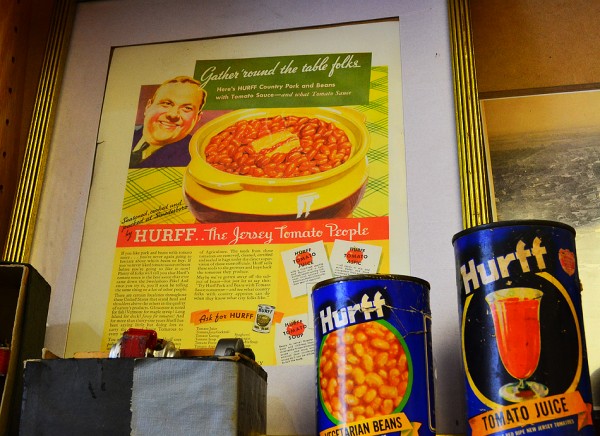
Once upon a time, a company with the somewhat off-putting name of Hurff was big enough to advertise in a top-of-the-line national magazine like LIFE.
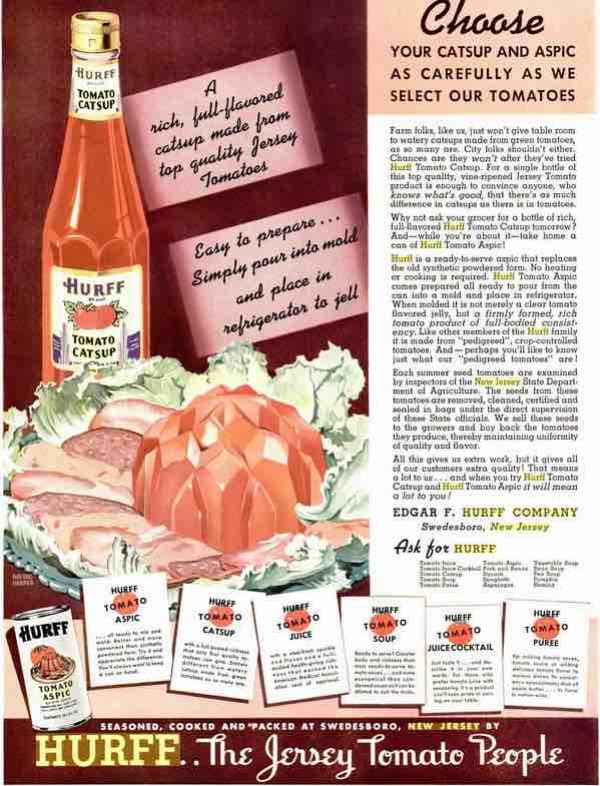
Here's the backstory, so far as I can find out.
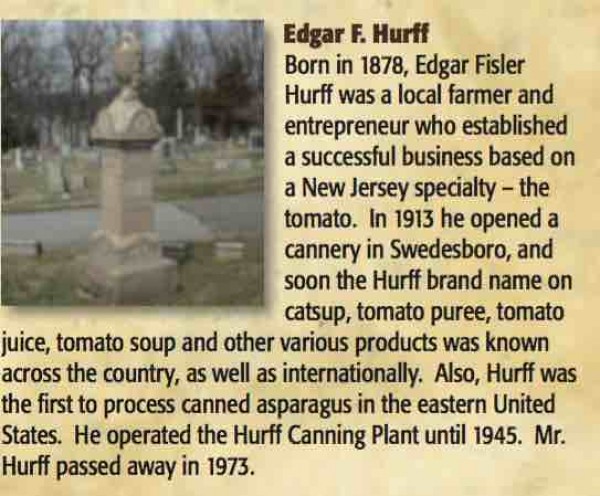
I have found ads from them as late as 1948. Does that mean that store was selling three-year-old cans of food, given the plant-closing date of 1945? Or maybe the plant did not close, but Hurff himself was forced out? We will probably never know...

Hurff is a fine forgotten piece of what cartoonist Robert Crumb calls "weird old America."
Posted By: Paul - Fri Dec 16, 2016 -
Comments (10)
Category: Food, Regionalism, Advertising, 1930s, 1940s
December 15, 2016
Bucket Head
Here's a guy who was caught on caught on camera stealing pigeons while wearing a bucket on his head and a plastic trash bag around his body. Florida, of course.More details at wsvn.com.
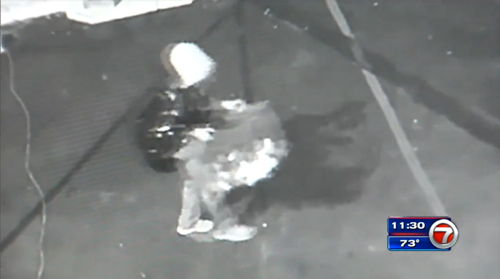
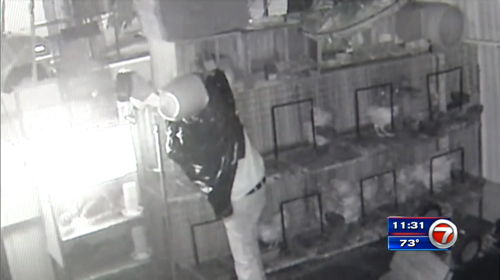
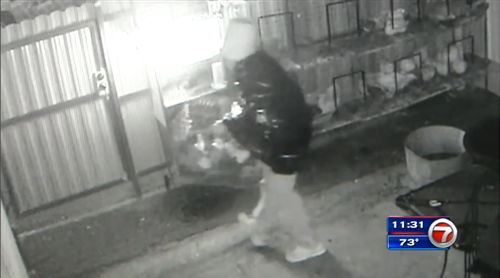
Posted By: Alex - Thu Dec 15, 2016 -
Comments (4)
Category: Crime, Disguises, Impersonations, Mimics and Forgeries
Follies of the Madmen #299

Not sure what the slugger prowess of stews has to do with running an airline. Nowadays, they could use a baseball bat for drunk-passenger control.
Original ad here.
Posted By: Paul - Thu Dec 15, 2016 -
Comments (4)
Category: Business, Advertising, Sports, Air Travel and Airlines, 1960s
December 14, 2016
Fish Chokes Swimmer
One for the weird death file: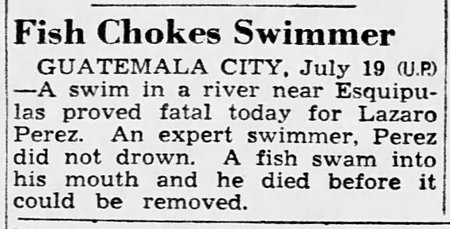
Great Falls Tribune - July 20, 1945
GUATEMALA CITY, July 19 (U.P.) — A swim in a river near Esquipulas proved fatal today for Lazaro Perez. An expert swimmer, Perez did not drown. A fish swam into his mouth and he died before it could be removed.
Posted By: Alex - Wed Dec 14, 2016 -
Comments (1)
Category: Death, Fish, 1940s
December 13, 2016
Nazis Mistuned Pianos
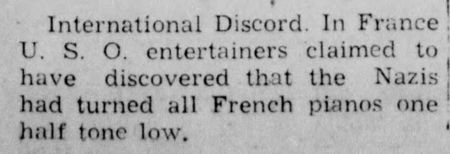
Sikeston Standard - Nov 10, 1944
This short note about Nazis mistuning French pianos ran in a number of papers in 1944. (The word 'turned' in the fourth line is evidently a typo and should be 'tuned'.) But I think there's more lurking beneath the surface of this story than one might suspect.
Time magazine (Oct 2, 1944) weighed in on the issue and suggested that "What they probably discovered were standard-pitched French pianos (A 435 vibrations a second), slightly jarring when played in combination with American-pitched instruments (A=440 vibrations a second)."
This then leads into the theory, popularized by Dr. Leonard Horowitz in his essay Musical Cult Control, that the modern adoption (in the mid-twentieth century) of A=440 Hz as the standard tuning frequency traces back to a plot in which Nazis, the Illuminati, and the Rockefellers collaborated. The aim of the plot was to herd populations into "greater aggression, psycho social agitation, and emotional distress predisposing people to physical illness" by making them listen to music tuned to a frequency that was both unnatural and jarring.
Horowitz advocated A=432 Hz as more natural and harmonious since it was "mathematically consistent with the Fibonacci series of numbers, and, therefore, universal design."
You can delve deeper into this rabbit hole of musical conspiracy theory here and here. Also check out the Skeptic's Dictionary article on Dr. Horowitz.
Posted By: Alex - Tue Dec 13, 2016 -
Comments (2)
Category:
Automatic Devil Dog Car Alarm
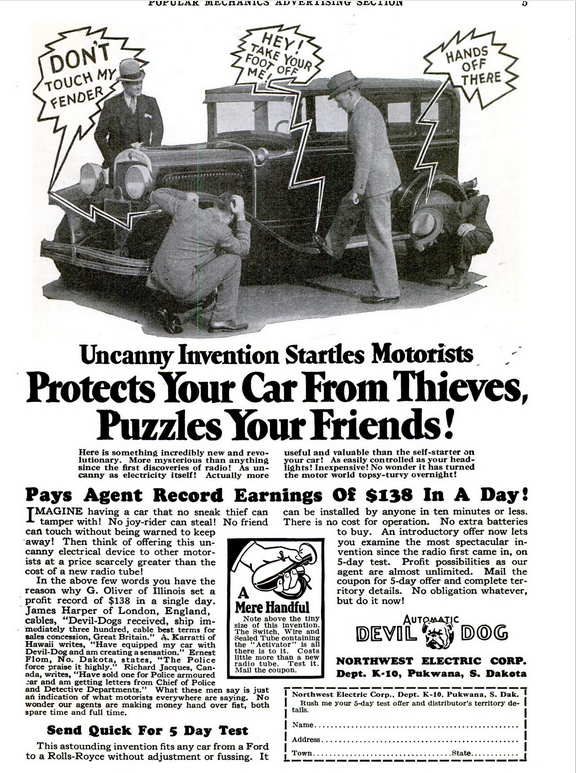
Contrary to the delightful ad, alarm did not speak phrases, but merely sounded the horn, as with modern car alarms.
See the actual device here, with explanation.
Posted By: Paul - Tue Dec 13, 2016 -
Comments (2)
Category: Crime, Technology, 1930s, Cars
December 12, 2016
A Refusal
From the Hyperallergic blog:For quite a while I've been engaged in a similar artistic endeavor. However, I've taken it one step further by not posting to Facebook at all. I call my project "An Absence."
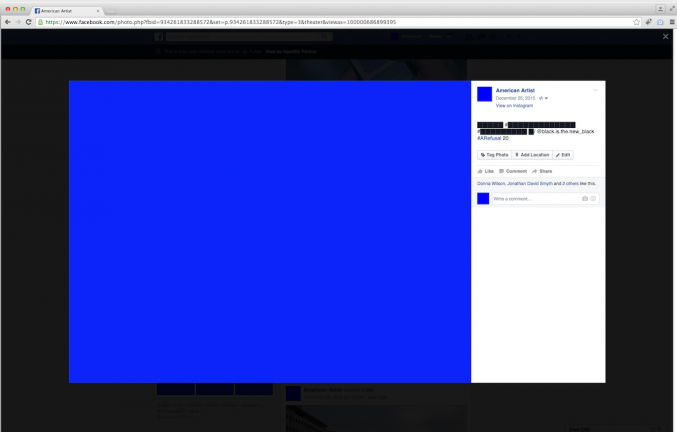
Posted By: Alex - Mon Dec 12, 2016 -
Comments (3)
Category: Art
HUH? (Boolya Botten Booten Baby)
Posted By: Paul - Mon Dec 12, 2016 -
Comments (7)
Category: Jabberwocky, Scat Singing, Nonsense Verse and Glossolalia, Music, 1960s
| Get WU Posts by Email | |
|---|---|

| Who We Are |
|---|
| Alex Boese Alex is the creator and curator of the Museum of Hoaxes. He's also the author of various weird, non-fiction books such as Elephants on Acid. Paul Di Filippo Paul has been paid to put weird ideas into fictional form for over thirty years, in his career as a noted science fiction writer. He has recently begun blogging on many curious topics with three fellow writers at The Inferior 4+1. Chuck Shepherd Chuck is the purveyor of News of the Weird, the syndicated column which for decades has set the gold-standard for reporting on oddities and the bizarre. Our banner was drawn by the legendary underground cartoonist Rick Altergott. Contact Us |

